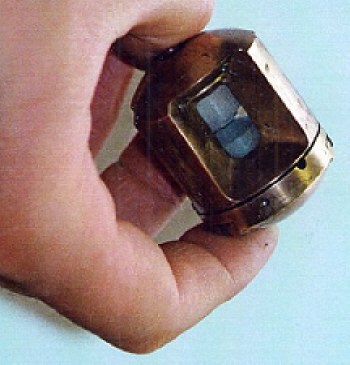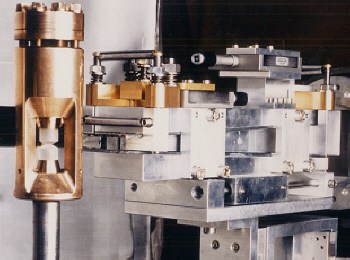Solid oxygen is the only elementary molecular magnet known. At atmospheric pressure (about 10-4 gigapascals) it is an anti-ferromagnetic insulator but becomes a superconductor and metal at about 96 gigapascals. Theory predicts that oxygen should lose its magnetic properties before it transforms into a superconductor, but this non-magnetic state has never been seen directly in an experiment before. Now Goncharenko has observed this magnetic “collapse” for the first time in experiments at the LLB.
The experiment involved scattering neutrons from a tiny polycrystalline sample of solid oxygen just 0.5 cubic millimetres in size. The sample could be compressed to high pressures using two tiny anvils. By monitoring how the neutrons scattered from the sample as the pressure increased, Goncharenko found that the long-range magnetic order completely disappears at about 8 gigapascals, which is far below the insulator-metal or superconductor transition.
“The study will help us to understand how the insulating elementary solids, such as oxygen, nitrogen and hydrogen, transform into metals and, in some cases, superconductors under high pressures, and can be used to test theoretical models,” says Goncharenko. He now plans to extend his study to single crystals of solid oxygen, which will allow him to obtain precise information on the positions of oxygen atoms in the crystal structure. He will then be able to test a recent theoretical model — proposed by physicists at Rutgers University and Cornell in 2002 — that predicts the formation of “herringbone” type nonmagnetic chains in solid oxygen under pressure.





